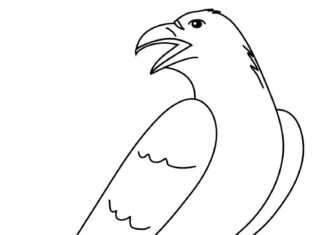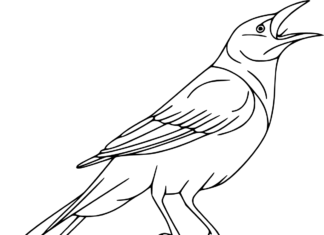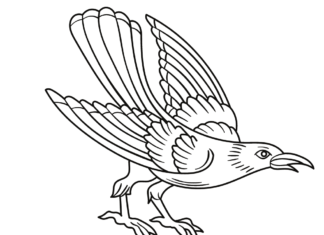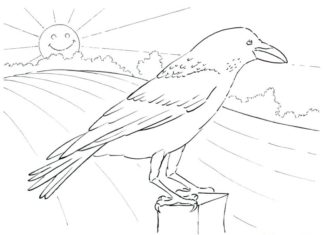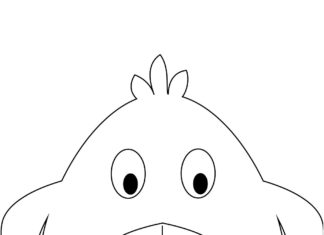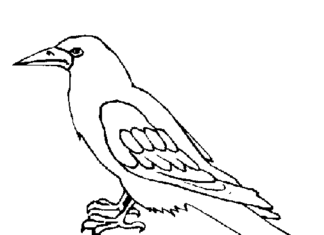Another species of bird from corvidae family. They are native to Asia but also live in Europe, including our country. An adult can reach body length of 40 to even 55 cm. In comparison to other animals of this species it has a very large wingspan, which ranges from 85 to even 100 cm. The weight of an adult can reach from 350 to even 650 grams.
Crows Coloring Book
Information
- Geographical distribution: Crows can be found on almost every continent. They inhabit a variety of habitats, from dense forests to open urban spaces.
- Intelligence: Crows are considered one of the most intelligent birds. Numerous scientific studies have been conducted proving their ability to solve problems, use tools and remember people's faces.
- Diet: They are omnivorous. Their diet can include seeds, fruits, invertebrates, small rodents and human food scraps.
- Social behavior: Crows are social birds, often found in groups. They can form large flocks, especially during wintering.
- Communications: Crows have a diverse sound repertoire with which they communicate with each other. They can mimic environmental sounds, including human voices.
- Nesting: They build nests in trees, composed of branches and padded with soft material. They nest singly or in small colonies.
- Longevity: In the wild, crows can live 10-15 years, although many birds do not live to adulthood due to predators and other threats. In captivity, they can live even longer.
- Cultural significance: Crows have an important place in many cultures and mythologies around the world. They are often a symbol of wisdom, treachery or superstition.
- Interactions with people: In some places, crows are considered pests because of their tendency to eat crops. But in other places they are valued for their role in the ecosystem as cleaners.
- Species diversity: Although the term "crow" is often used to describe a specific bird, there are many different species of crows, such as the black crow, white-rumped crow and gray crow.
Trivia
- Tools: Crows can use tools, which is rare among birds. They have been observed using sticks to pull insects out of holes or leaves to collect water.
- Face recognition: Research on American crows has shown that they can recognize human faces and remember them for years. They can react differently to people who have previously mistreated them.
- Advanced planning: Crows can plan for the future. In an experiment, these birds were able to understand that certain tools would be needed later and stored them for later.
- Crow funerals: Crows react to the bodies of dead comrades by gathering around them and "mourning" them. Whether this is a form of mourning or a way of learning about potential dangers is still under investigation.
- Mimetic ability: Like parrots, some crows can mimic human voices and other environmental sounds.
- Complex social interactions: Crows exhibit complex social behavior, such as forming alliances, cheating and even "bargaining" for food.
- Learning through observation: Young crows learn by observing adult birds, not just by direct instruction.
- "Winterizing" food: Crows often bury food in the ground as a backup for later. What's more, they can remember thousands of places where they have hidden their supplies.
- Fun: Crows like to play. They have been observed sliding off roofs on chunks of ice or hanging from branches on one leg.
- Communications: Crows communicate with each other in a complex way, using different sounds depending on the situation - whether warning of a predator or when looking for a mate.


